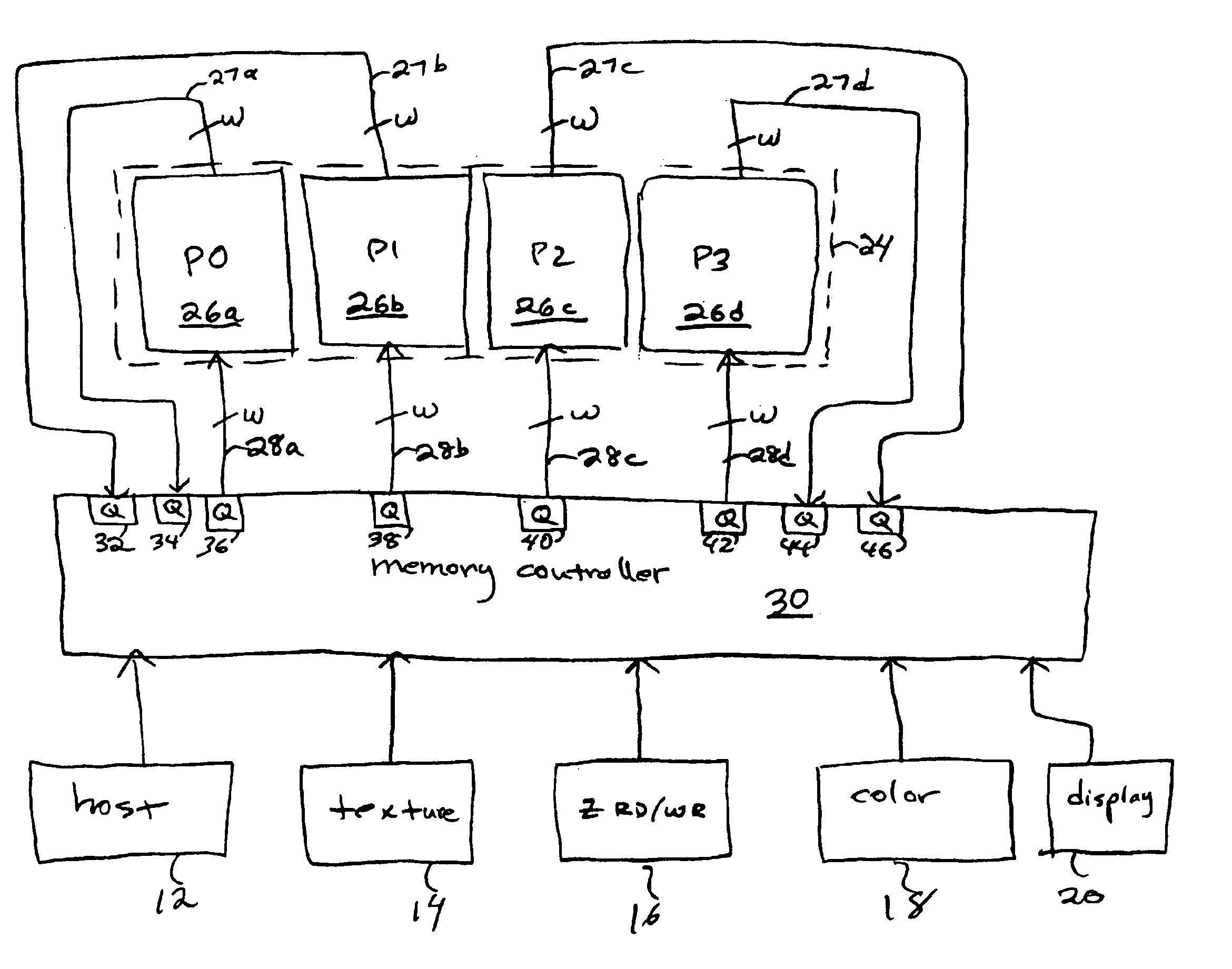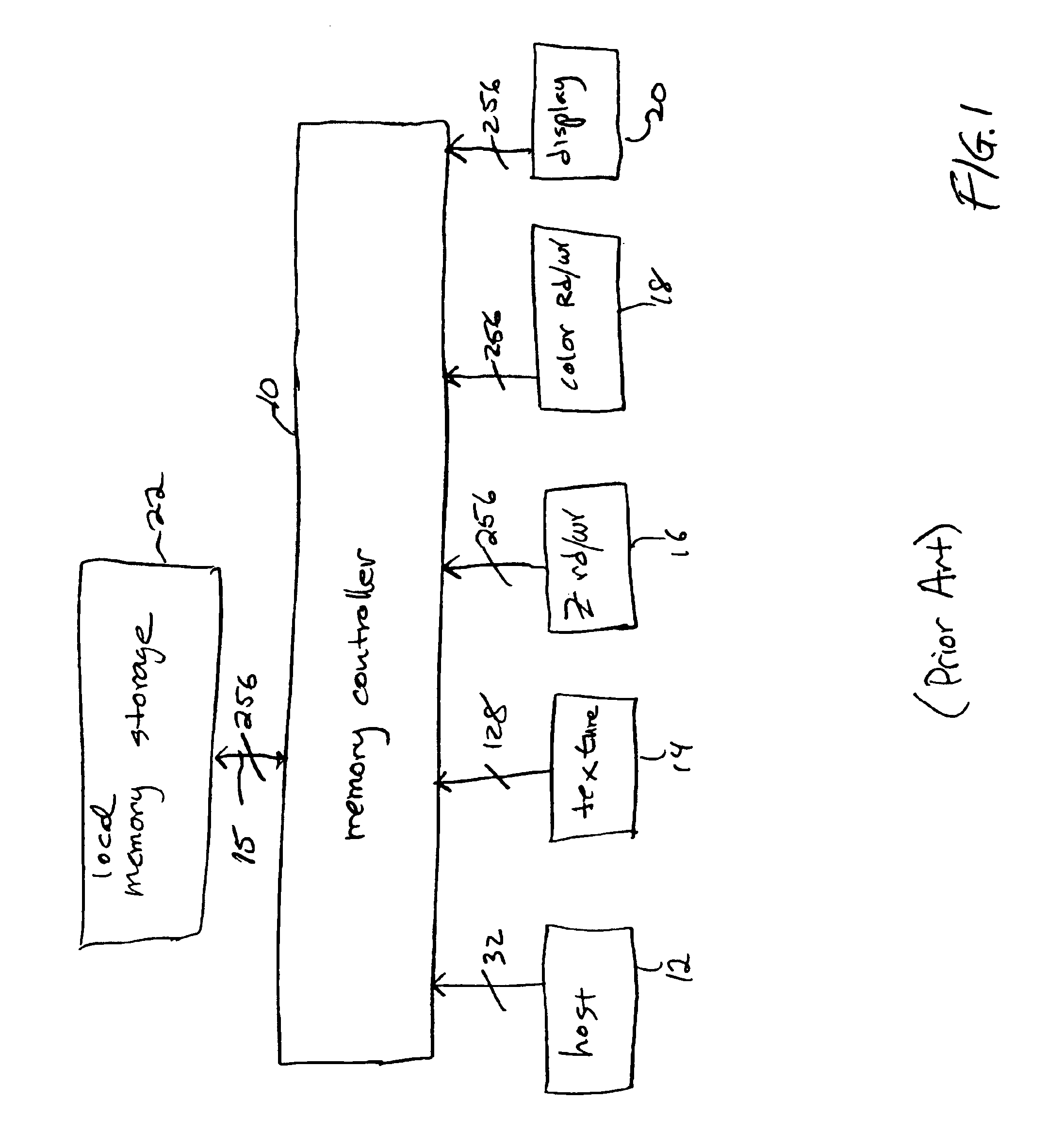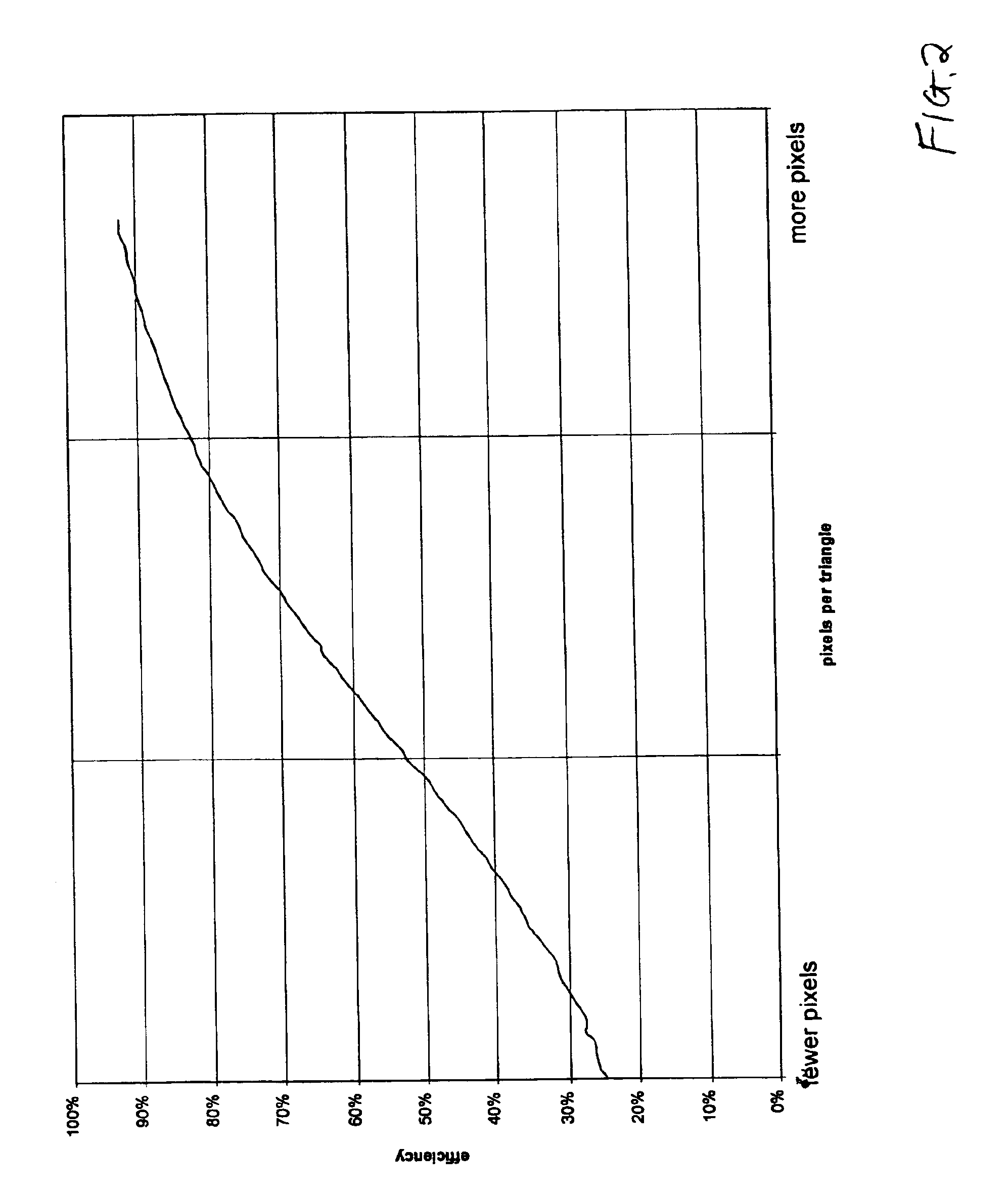Controller for a memory system having multiple partitions
a memory system and control board technology, applied in the direction of memory adressing/allocation/relocation, image memory management, instruments, etc., can solve the problems of large amount of wasted memory throughput in the graphics memory subsystem, inefficient minimum size of 32 bytes, and inefficient monolithic memory subsystems in another way, so as to improve the topology and cycle time of partitions and improve the deliverable throughput of arrays.
- Summary
- Abstract
- Description
- Claims
- Application Information
AI Technical Summary
Benefits of technology
Problems solved by technology
Method used
Image
Examples
Embodiment Construction
FIG. 3 shows a high-level block diagram of a system in accordance with the present invention. The figure shows that the memory array 24 has an number of independently operable partitions 26a, 26b, 26c 26d, each with a bus 28a-28d and a bus 27a-27d having a width w that is preferably a smaller transfer size than the single prior art bus 15 in FIG. 1. In one embodiment, there are four independent partitions P0-P326a, 26b, 26c 26d each with a bus one quarter the size of the non-partitioned bus, i.e., each with a 64 bit bus. Each of the memory system clients 12-20 is connected as before to the memory controller 30 which presents a non-partitioned view of the memory to the clients. The memory controller 30 includes a number of queues 32, 34, 36, 38, 40, 42, 44, 46 that connect to the memory array of each partition and control logic (not shown in FIG. 2) that determines the one or more partitions to which a request should be routed and the one or more partitions from which a response (rea...
PUM
 Login to View More
Login to View More Abstract
Description
Claims
Application Information
 Login to View More
Login to View More - R&D
- Intellectual Property
- Life Sciences
- Materials
- Tech Scout
- Unparalleled Data Quality
- Higher Quality Content
- 60% Fewer Hallucinations
Browse by: Latest US Patents, China's latest patents, Technical Efficacy Thesaurus, Application Domain, Technology Topic, Popular Technical Reports.
© 2025 PatSnap. All rights reserved.Legal|Privacy policy|Modern Slavery Act Transparency Statement|Sitemap|About US| Contact US: help@patsnap.com



